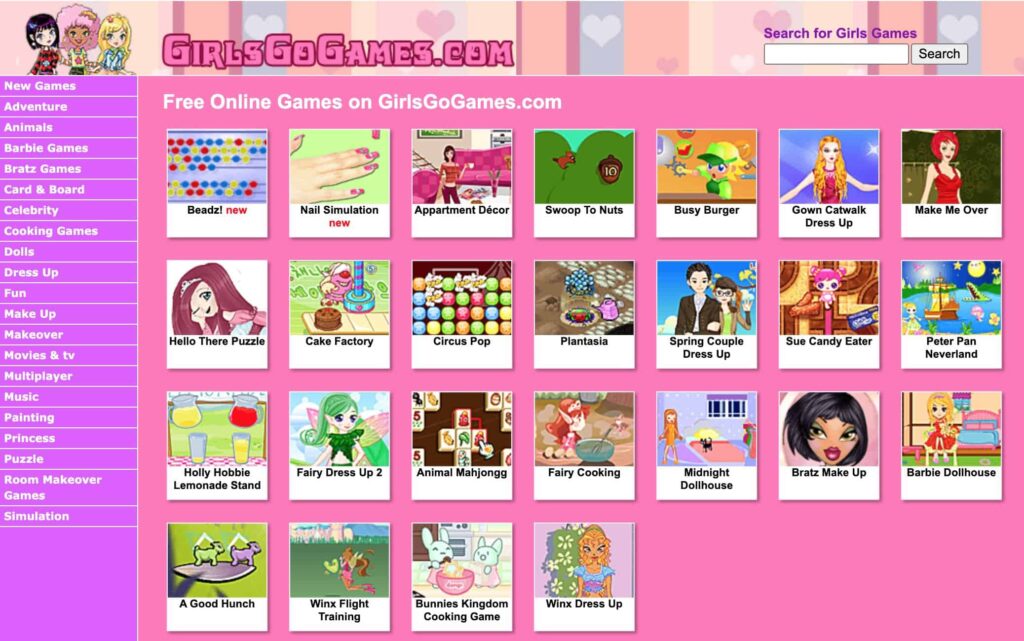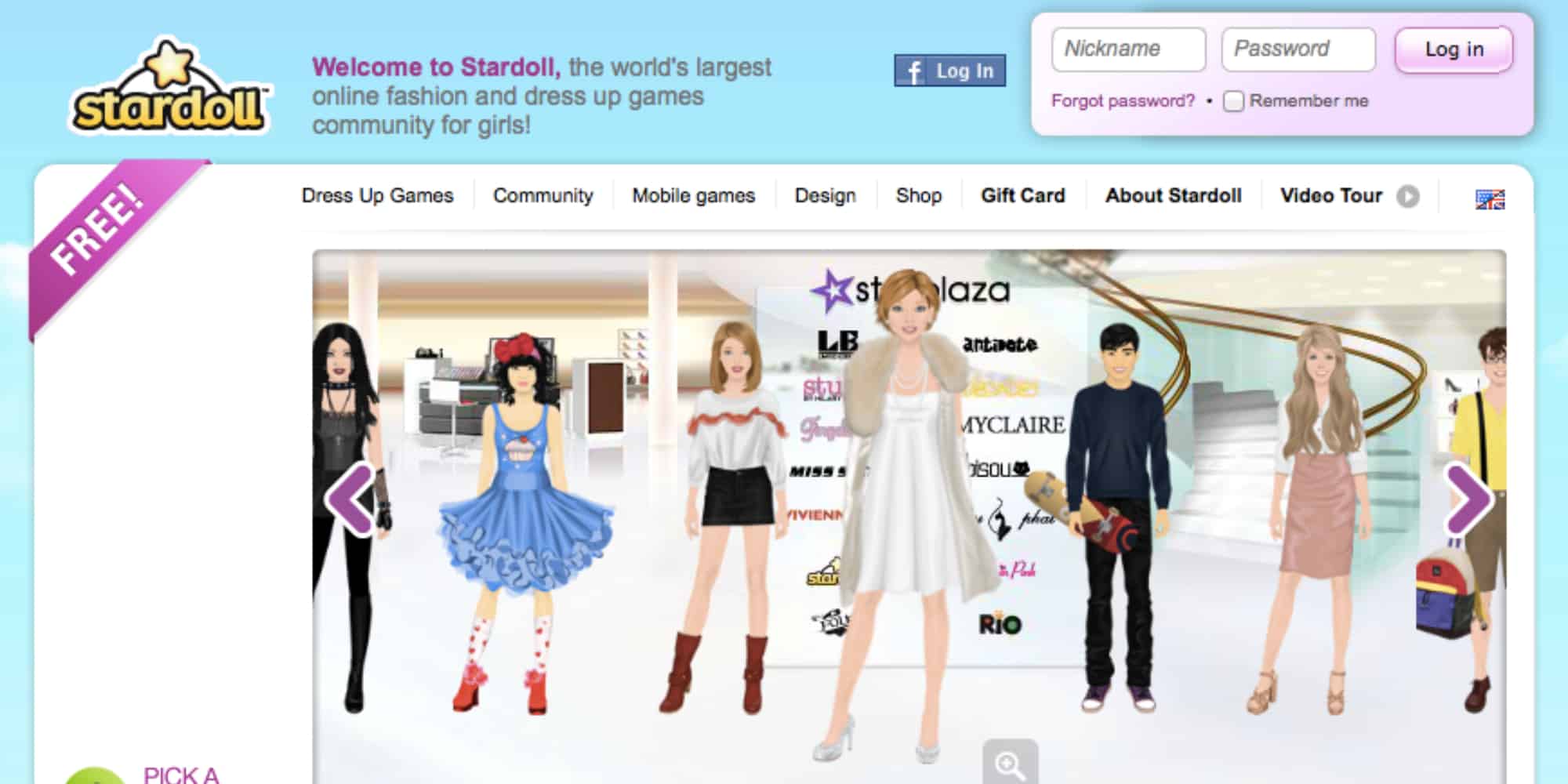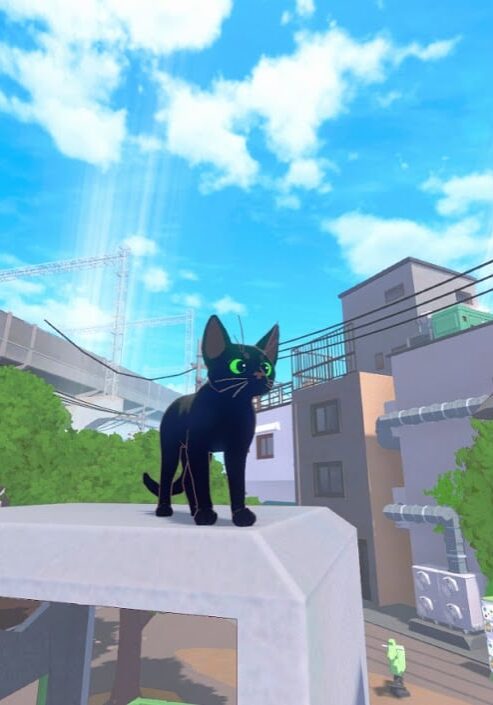
Remember GirlsGoGames?
Whether you were designing chic outfits on Stardoll or exploring the wide range of activities on GirlsGoGames, where dress-up was a beloved feature among many, these platforms have been a staple in the digital playground for young girls. While GirlsGoGames offered a wide array of genres, its dress-up games were particularly notable, providing a canvas for creativity and self-expression. Long before the current era of sophisticated gaming consoles and virtual reality, this simple yet captivating genre of games captured the hearts of many young girls. Dress-up games, often flash-based, provided a digital canvas for creativity, fashion, and self-expression. Despite the decline of Flash and the evolution of gaming technology, dress-up games continue to hold a symbolic place in girl gaming.

Screenshot from GirlsGoGames
Dress-up games, in their essence, are an extension of the age-old tradition of playing with dolls – a form of play that allows for the exploration of identity, creativity, and social roles. These games offered a digital platform where girls could experiment with fashion without any constraints, combining various clothing and accessories to create unique styles. The appeal of these games lies not just in fashion but in storytelling and identity exploration. Players often craft narratives around the characters they dress up, developing personalities and backstories for them. This aspect of dress-up games mirrors the role-playing elements found in more complex video games, albeit in a more accessible and simplified form.

Screenshot from Stardoll
The decline of Adobe Flash, which was once the backbone of most online dress-up games, marked a turning point for this genre. Many beloved games became inaccessible, leading to a significant decrease in their popularity. The tech world’s shift towards more advanced, mobile-friendly, and secure web technologies further contributed to this decline. However, this technological shift did not entirely erase the genre. Developers have been converting classic Flash games to HTML5 or creating new apps to keep the spirit alive. These modern iterations often incorporate more advanced graphics and social sharing features, adapting to the changing tastes and technological preferences of their audience.
Despite these challenges, dress-up games have not lost their symbolic value in girl gaming. They remain a gateway for many young girls into the world of gaming, offering a familiar and engaging starting point. These games continue to be a safe space where creativity, fashion sense, and storytelling can flourish without the competitiveness or complexity of mainstream games. Moreover, dress-up games hold a nostalgic value for many who grew up playing them. This nostalgia has contributed to their resurgence in popularity, particularly among young adults seeking a connection to their childhood.
Dress-up games, though diminished in number post-Flash era, continue to be a significant symbol of girl gaming. They represent a blend of creativity, fashion, and narrative that is both accessible and engaging. As the gaming industry evolves, the essence of dress-up games – fostering creativity and self-expression in a non-competitive environment – remains a vital component of girl gaming culture.
Enjoyed this story? Support independent gaming and online news by purchasing the latest issue of G.URL. Unlock exclusive content, interviews, and features that celebrate feminine creatives. Get your copy of the physical or digital magazine today!
Little Kitty Big City: The Warmth of Cosy Gaming
Proof That Sometimes the Purr-suit of Happiness Is as Simple as Being a Cat Written by Rose Renaud The mainstream popularity of the casual games genre has exploded in recent years. They have always been around and possess a sense of nostalgia with series like Animal Crossing and The Sims. They were worlds where we…
Strange Horticulture: Unraveling Mysteries One Leaf at a Time
In this botanical whodunit, the only thing sharper than your shears is your wit. Written by Janelle Hyde Strange Horticulture is an immersive game that excellently captures a somber tone. Set in the fictional town of Undermere, players inherit a plant store and navigate a world filled with botanical mysteries and magical properties. The game…
Petra Collins’ “I’m Sorry” Collection
A Whimsical Wail of Nostalgia and Glamour Welcome back to the dreamy, cotton-candy universe of Petra Collins, where the boundary between reality and fantasy is as blurry as your latest Instagram filter. With her reimagined collection, “I’m Sorry,” Petra is serving us a triple scoop of nostalgia, art, and high-fashion collaboration. Let’s dive into this…
Sonny Angels: The Cherubic Collectibles You Didn’t Know You Needed
Sonny Angels don’t just give you wings – they also lighten your wallet! Alright, let’s dive into the world of Sonny Angels. Picture this: you’re wandering through a labyrinthine Japanese department store, and suddenly, you’re ambushed by a horde of tiny cherubic figures. Each one is donning an outrageous headgear – a strawberry, a panda,…
5 Must-Watch Runs From SGDQ 2024
Dive Into the Best of Summer Games Done Quick with These Five Unmissable Speedruns Written by Terry Ross Once a year, thousands of gamers turn off the cosy droning of the YouTube lo-fi beats streams which accompany their workweek and switch over to something far more exciting: the summer Games Done Quick speedrunning marathon. For…
Rock Band: The Game That Defined Your Music Taste Without You Realising It
The Unsung Influence of Rock Band and Guitar Hero on Modern Emo and Music Culture Written by Kayla Moreno Y2K and its subcultures have been seeing a massive resurgence over the past several years. It’s known that when people crave a sense of comfort, nostalgia waves often bring them peace. Things that are reminiscent of…
Gaming Purity and the Attitude Towards Cheats and Wikis
The Holier-Than-Thou Attitude Towards Cheats and Wikis in Single-Player Games In the hallowed halls of single-player video games, there’s an unspoken hierarchy among players—a purity test, if you will. On one side, you have the self-proclaimed purists, those who wear their struggle and perseverance like badges of honor. On the other, there are the pragmatists,…
Katy Perry Returns with “Woman’s World”
A Controversial Comeback for the Singer’s Sixth Studio Album Katy Perry has once again graced the pop music scene with her latest single, “Woman’s World,” released today, July 12, 2024. This track marks a significant moment in her career as it’s the first single from her upcoming, yet-to-be-titled sixth studio album. Perry’s announcement and teasers…
Defining The Fashion Metaverse
Redefining the Digital Luxury Experience The concept of the fashion metaverse has rapidly evolved from a niche experiment to a burgeoning frontier where technology, fashion, and social interaction converge. With platforms like DREST leading the charge, the metaverse offers a transformative space for brands and consumers alike. This thought piece explores the intricate dynamics of…
Is the IT Girl Just an Online Girl?
Reflecting on the broader implications of digital culture on today’s celebrities In the kaleidoscopic realm of contemporary culture, the concept of the “It Girl” morphs and mutates, perpetually reinventing itself to mirror societal shifts. Once defined by fleeting glimmers in the tabloid spotlight, today’s It Girl is enmeshed in the digital ether, her identity coalescing…










